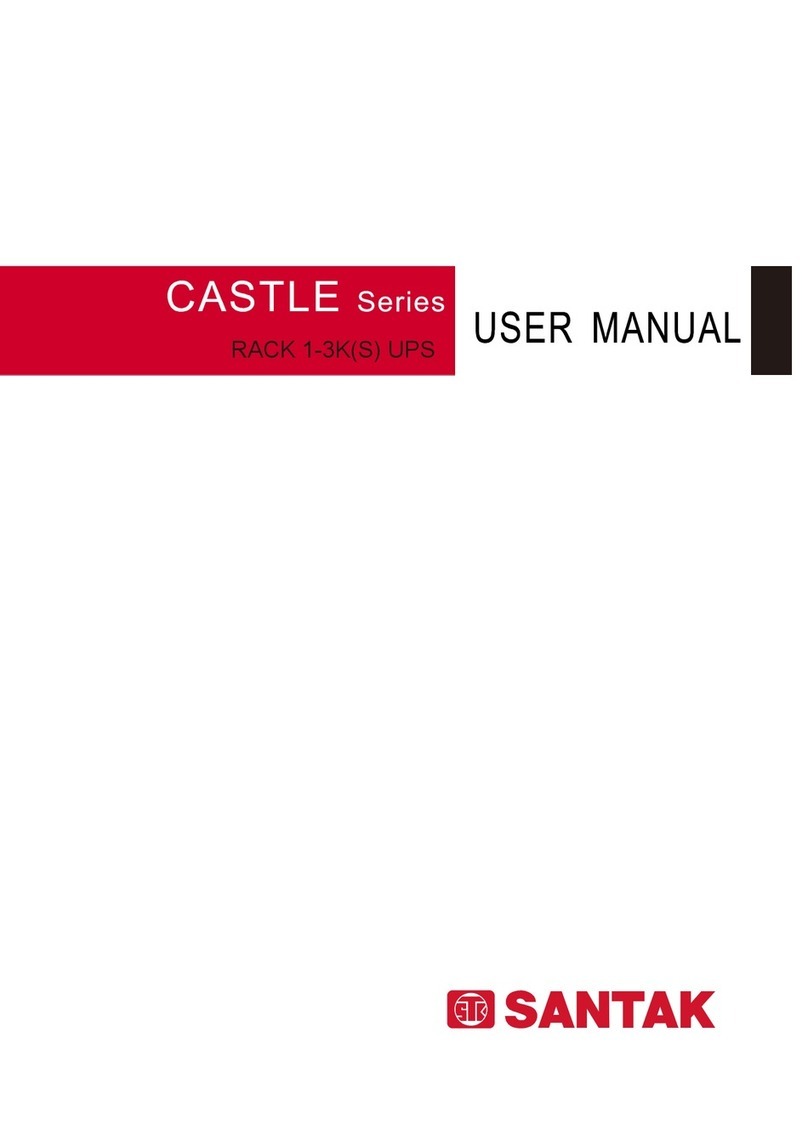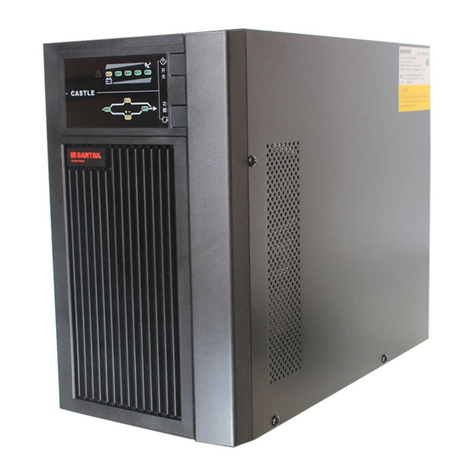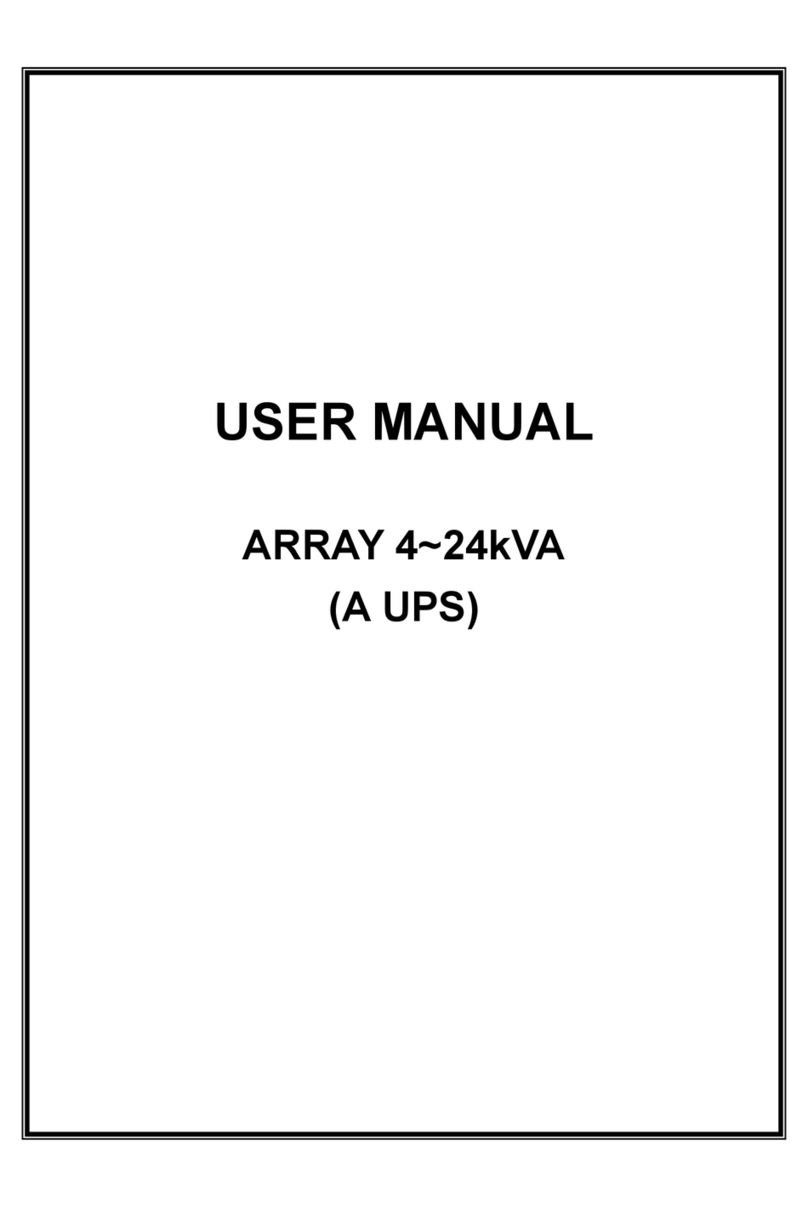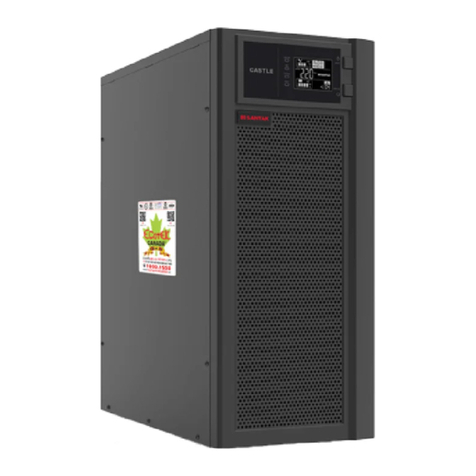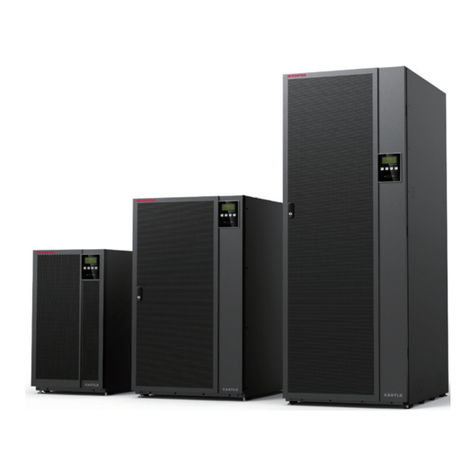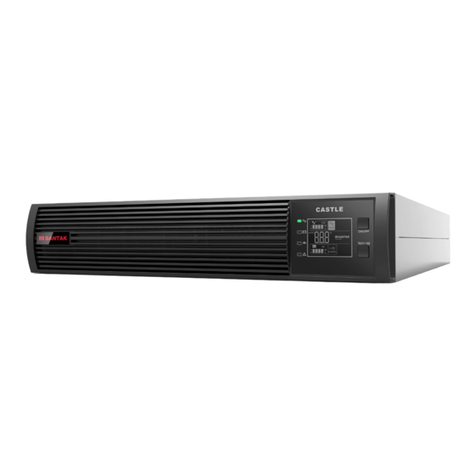
In order to fully disconnect the UPS system, first press the Standby switch then
disconnect the mains .
Ensure that no fluids or other foreign objects can enter the UPS system.
Maintenance, servicing and faults
The UPS system operates with hazardous voltages. Repairs should be carried
out only by qualified maintenance personnel.
Caution - risk of electric shock. Even after the unit is disconnected from the mains
power supply (utility power socket -outlet), components inside the UPS system
are still connected to the battery and still present hazardous voltage.
Before carrying out any kind of servicing and/or maintenance, disconnect the bat-
teries and verify that no current is present and no hazardous voltage exists in the
terminals of high capability capacitors such as BUS capacitors.
The batteries can present a risk of high voltage and high current. Replacement or
maintenance of the batteries should be carried out by qualitied service personnel
who are knowledgeable about batteries. No other persons should handle the
batteries.
Caution - risk of electric shock. The battery circuit is not isolated from the input
voltage. Hazardous voltages may occur between the battery terminals and the
ground. Before touching, please verify that no hazardous voltage is present!
Batteries may cause electric shock and have a high short-circuit current. Please
take the precautionary measures specified below and any other measures
necessary when working with batteries:
- remove wristwatches, rings and other metal objects
- use only tools with insulated grips and handles.
When replacing the batteries, install the same number and the same type of the
batteries.
Do not incinerate batteries, they may explode.
Do not open or mutilate batteries, released electrolyte is highly poisonous and
harmful to the skin and eyes.
Please replace the fuse only with a fuse of the same type and same amperage in
order to avoid fire hazards.
2. SAFETY INSTRUCTIONS
Operation
The UPS system features its own, internal current source (batteries). The UPS
output sockets may contain hazardous voltage through operation from the battery
even if the UPS system is not connected to the utility power socket-outlet.
